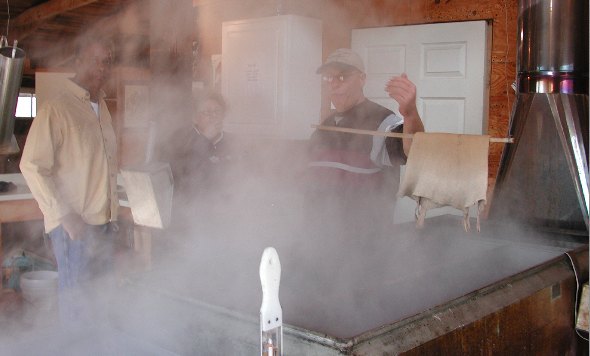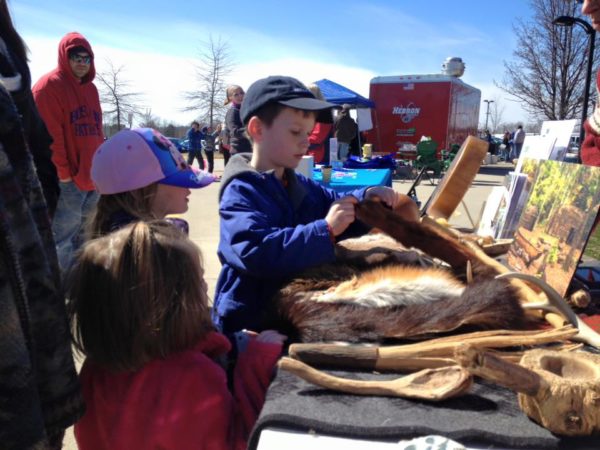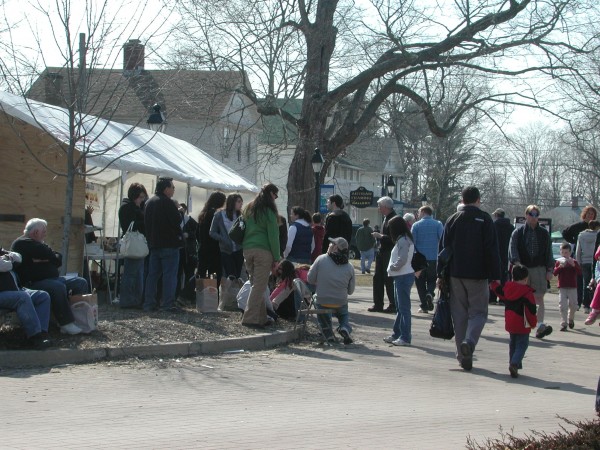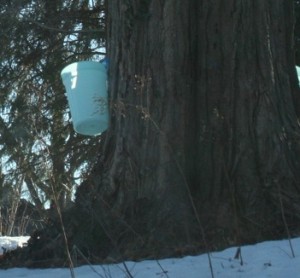Hebron Maple Fest Sugarshacks, How It Began + Wenzel’s Maple Pudding Cake Recipe
“There are three classes of people: those who see. Those who see when they are shown. Those who do not see.”
– Leonardo da Vinci
Alchemy. Time flows and a tree transforms sunlight, water, earth and air into growth and matter. The rustle of leaves, the color in autumn, shade and beauty are all bonuses for those who notice. For children who climb and build forts, a tree is both friend and magic, a place to retreat and observe, dream and test nascent climbing skills.
Sweet sap is the literal lifeblood of certain tree species – gathered drop by drop, hauled to a sugarhouse and then distilled with heat, time and patience. The result is sweet syrup. One of the finest experiences in the world is to sample fresh-made syrup – from the source where it is transformed, inside a sugarhouse. Next best is fresh warm syrup drizzled on clean new snow.
Did you know? Sweet syrup can be made from sugar maples, shagbark hickories, birch, and other trees. Here is a link for a story in Wild Foodism about 22 tree sources for sap and syrup.
The annual Hebron Maple Festival is Saturday, March 17, 10 a.m. to 4 p.m., and Sunday, March 18. Sugarhouse tours and demonstrations, a great quilt show, food vendors. No admission fee. Be sure to check updates on the event Facebook page www.facebook.com/hebronmaplefestivalct since the weather has been so variable. (Hope you get to try the chili before it's sold out.)
The event began because Selden Wells, owner of the Wells Sugar House, decided to do a fundraiser to benefit the Hebron Library, according to the official site. “His idea was to have a ‘sugar on snow' gathering at his house, which resulted in an unexpected and excited crowd of maple-loving people. He then contacted the other local sugarhouses and organized the first Hebron Maple Festival. The event has been run by a very dedicated group of volunteers for the last quarter of a century. Since 2016 The Chamber of Commerce, Inc, Windham Region recognizing the value of this event to the local businesses and nonprofits agreed to become the event organizers.”
Here's the web site https://www.hebronmaplefest.info/sugarhouses for which sugarhouses are open this year. For a look at the process, visit the Wenzel Sugarhouse site – recipes shared there too.
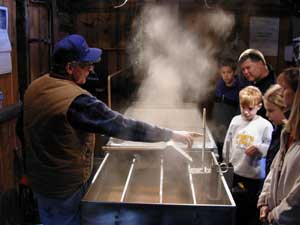
Part of the process of making syrup. Wenzels ship syrup by arrangement. Image is to their site; story and more photos.
Remember, after the festival is over, the maple syrup crafted remains for those who seek this liquid gold. Call ahead to arrange a tour or to get more for your pancakes or to drizzle on vanilla ice cream and other uses. Recipes are often shared by those who love maple sugar and syrup. Here's one.
“Joyce's Recipe for Maple Pudding cake” via Wenzel Sugarhouse. (Yes, they will ship their delicious products. Their phone is listed below the recipe.)
Joyce's Recipe for Maple Pudding Cake
1 1/2 cups all purpose flour
3/4 cup sugar
2 teaspoons baking powder
1/2 teaspoon salt
3/4 cup milk
1/2 cup chopped walnuts
1 1/2 cups real Connecticut, pure maple syrup
3/4 cups water
2 tablespoons butter
Whipped cream or ice cream
Mix together the flour, sugar, baking powder, salt, milk and nuts. Pour into a greased 8 – inch square pan. Combine the maple syrup, water, and butter in a small saucepan. Heat just until the butter melts. Pour the warm sauce over the cake batter, but do not stir!
Bake in a preheated 350 degree oven for 45 minutes.
Serve warm with whipped cream or ice cream. This recipe serves 6.
A pudding-like sauce forms as the cake bakes.
————————————————-
To arrange for them to send real maple syrup from Connecticut contact Ron and Joyce: (860) 649-0841.
And psst.
According to a USDA report, “Pure maple syrup contains 20 beneficial compounds that play a key role in human health. A researcher at the University of Rhode Island is investigating how bioactive compounds in maple syrup may help protect the body’s immune system; have a positive impact on chronic inflammation, including metabolic syndrome, brain health, and liver disease; and promote a healthy gut. The project will also produce new information on clinical markers of inflammation and insulin sensitivity. The results of this study may show that indulging in maple syrup does not have to be a guilty pleasure.”
Well, yum.

